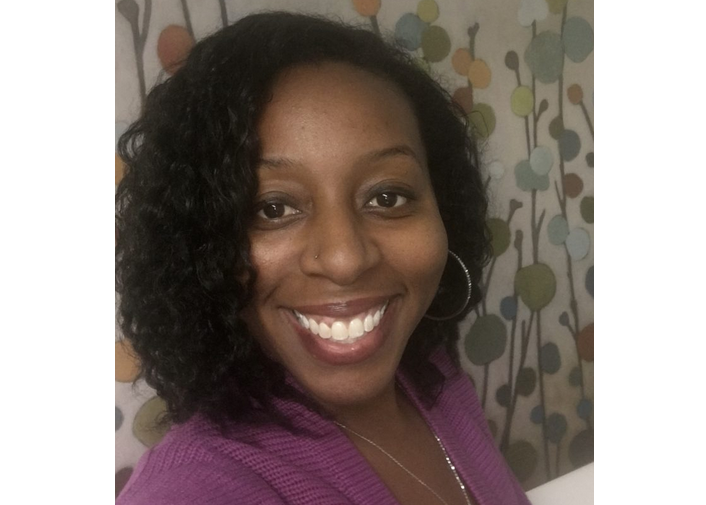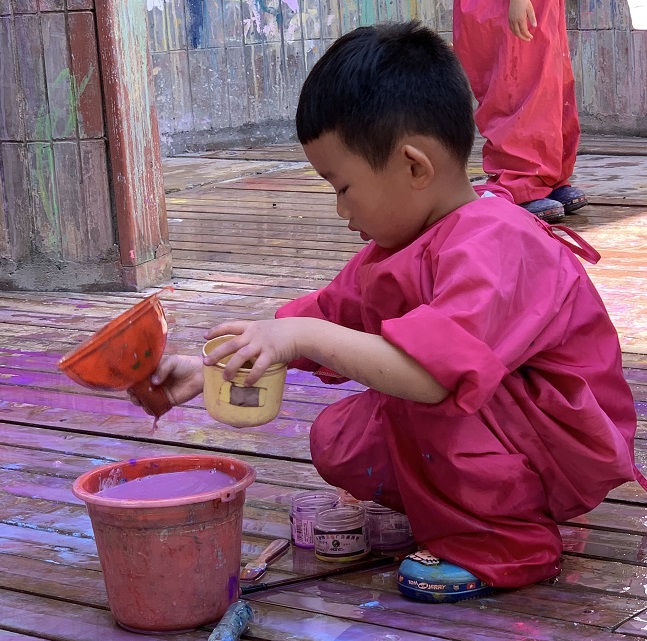On September 10th, the New York City Division of Early Childhood Education (DECE) updated its guidance on face coverings, bringing the guidance for 3K and Pre-K for All classrooms in NYCEECs into alignment with the guidance for district schools: All children ages two and over who can medically tolerate a face covering should be expected to wear one. This guidance differs from the NYS DOH Interim Guidance for Childcare and Day Camp Programs, which states: Young children/campers (i.e., those that are not yet in kindergarten) do not need to wear face coverings when they are in child care or day camp program facility or area. The change brought forth many questions from educators working in childcare settings. Here are some of the most common questions:
-
- Will masks scare children?
At the beginning of the pandemic, seeing family members and caregivers wearing masks was new and, for some children, frightening. (To be reminded of what that time was like, watch pre-K teacher Glenn Peter’s puppet show in which he dramatizes a child’s terror at seeing his mother put on a mask to go shopping.)
But now we have been living with a mask mandate for six months — a significant portion of young children’s lives. For many children, seeing someone outside of their home not wearing a mask is more remarkable than seeing people with masks. Using cloth masks that are not reminiscent of medical settings may be more cozy for some children.
Educators can use books and songs to support children who need more time to get used to face coverings. Here is a social story from the National Center for Pyramid Model Implementation. Betsy Blachly, former Head Music Teacher at the Bank Street School for Children, shared a song game to help normalize mask-wearing. To the tune of Frere Jacques:
“Put your mask on, put your mask on.
Make a face, Make a face.
What are you feeling , what are your feeling.
Show us now, show us now.”
Children later on will love to try their own rhymes – and you don’t have to really rhyme in a strict sense:
Put your mask on, put your mask on.
Lift your head up, put your head down.
Shake your head to the left and right, faster faster.
Now a big FROWN. Eyes open like a clown.
2. Will wearing a mask poison children by trapping their carbon dioxide?
This is a myth. John Hopkins Children’s Hospital provides this scientific explanation of what happens when you wear a mask:
When you exhale, carbon dioxide leaves your lungs and exits the body through your nose or mouth. Carbon dioxide is a gas made up of small molecules. These molecules are so small that they can pass through many materials, including the materials used to make masks. If you are using a medical-grade or cloth mask, carbon dioxide will pass through safely. It will not accumulate inside the mask or make you sick.
3. Will masks prevent children from learning to talk and read?
Babies and young children watch their caregivers’ mouths as they are learning to talk and developing phonological awareness. Although they cannot see their educators’ mouths in school, children will develop these skills through interactions with attuned family members at home. While in childcare, children will rely on their total language repertoire which will now include more gestures and signs as well as sounds and words. Educators can support children by using consistent signs and gestures and noticing and affirming the variety of approaches to communication children are using. Clear masks are available for speech therapists and reading interventionists to use with children who need extra visual support.
4. Will masks prevent children from being able to identify emotions?
Children are super intelligent and use numerous cues to determine how their caregivers are feeling. A 2012 study showed that face masks had no effect on the ability of children under 9 to identify emotions. In the many cultures around the world where face coverings are commonplace, children establish attuned relationships with their caregivers.
Educators can support children by naming their emotions and being expressive with their eyes and gestures. Here are some additional ideas from the National Center for Pyramid Model Implementation: Helping Children Understand Emotions While Wearing Masks.
5. Will masks prevent children from being able to identify their educators or friends?
Again, children are super intelligent and able to identify people with other cues such as voice, physical presence, scent, and gesture. If you are using cloth masks, wearing the same pattern every day might provide an easy cue. Showing children your face with and without a mask during remote orientation is another strategy. Some programs have asked teachers to wear a picture of their unmasked face on a sign around their neck. The step of examining the picture and associating it with a memory of the individual seems like a greater cognitive challenge than using the many other cues available.
6. Will children be punished for not wearing their masks or not wearing them properly?
Early childhood professionals will approach mask-learning the same way they approach hand-washing, street-crossing, and other health and safety practices — as a good habit to be taught. We don’t punish children for what they don’t know yet. Group conversations about why we engage in safety practices supports children’s concept development, civic understanding and positive sense of themselves as members of a community.
Many children have already adapted to wearing masks outside the house, and they are too busy with the wonder of the world to think about them much. Other children find them bothersome, just as for some children socks are intolerably oppressive. These children will need our compassion and guidance. As always, genuine family partnership is key to supporting behavioral change.
The DECE guidance states:
Teachers can incorporate a wide variety of strategies to introduce children to this expectation, which may be accomplished over time. It is important that this expectation not lead to conflict between or among children and teaching staff. Children who refuse to wear a face covering, are crying, or are dysregulated may be experiencing mental distress. In these cases, teaching staff and families should use positive, nurturing strategies to prevent conflicts over face covering, and encourage the child to consistently use a face covering over time. Early childhood children should not be isolated, suspended or expelled for failure to wear masks. Children who do not respond to a positive intervention plan may be transitioned to remote learning.
Children are resilient, adaptable and ready to learn. As educators, we are also called on to be adaptable: to question, to try out new practices, and to experiment until we find individualized approaches that work. Like scientists and children, we are innovators, who often learn by trial and error. Children can do so much with the support and encouragement of people (teachers, friends, and family members) who care about them.
Source: Do Masks Impede Children’s Development? By Perri Klass, M.D.
Helen Frazier is the Institute’s Director of Early Childhood.



